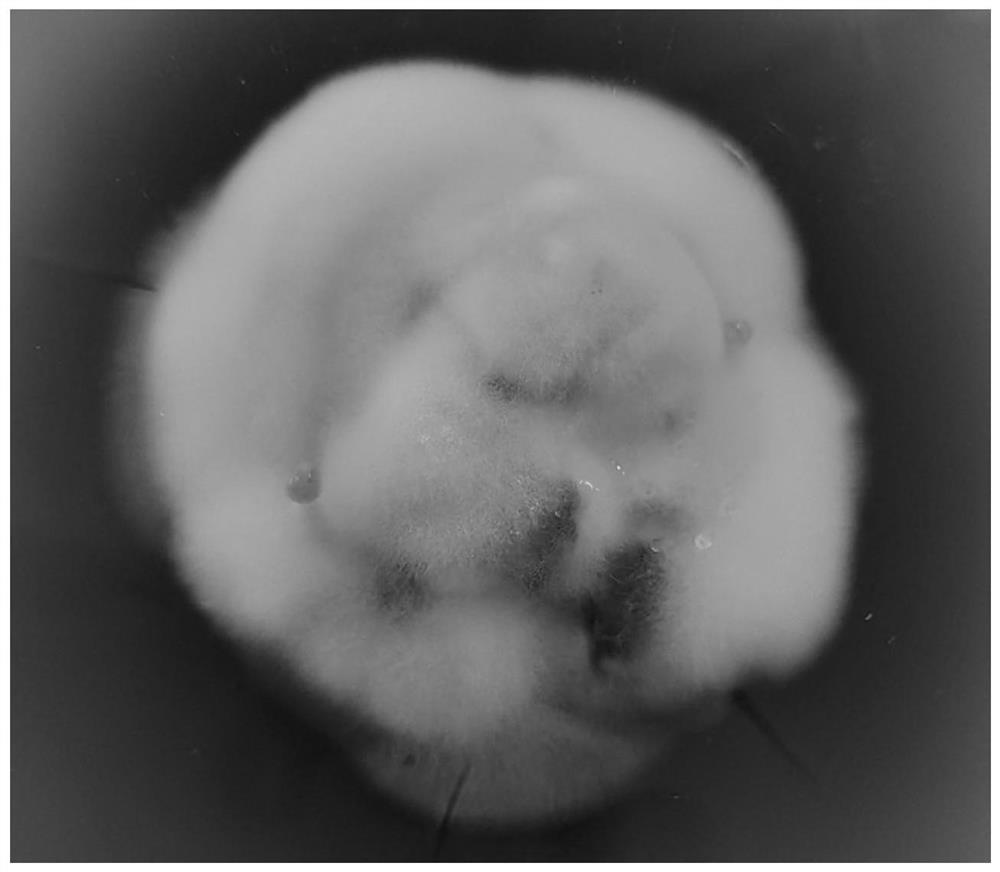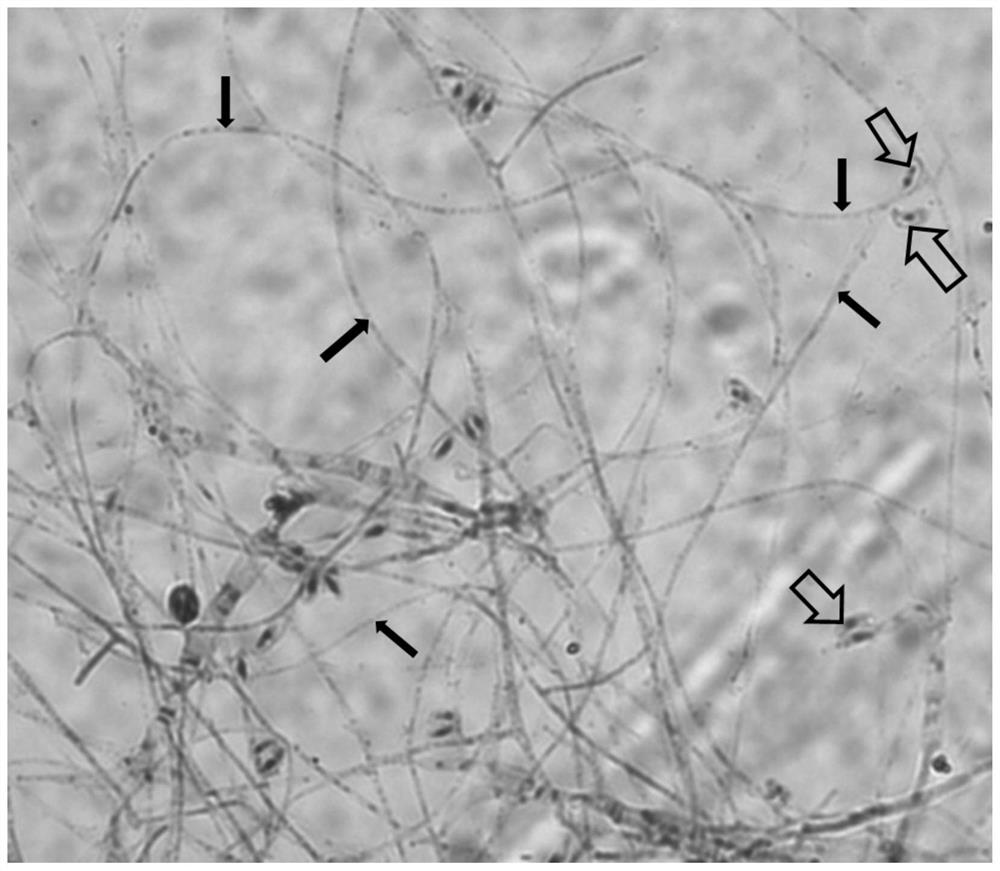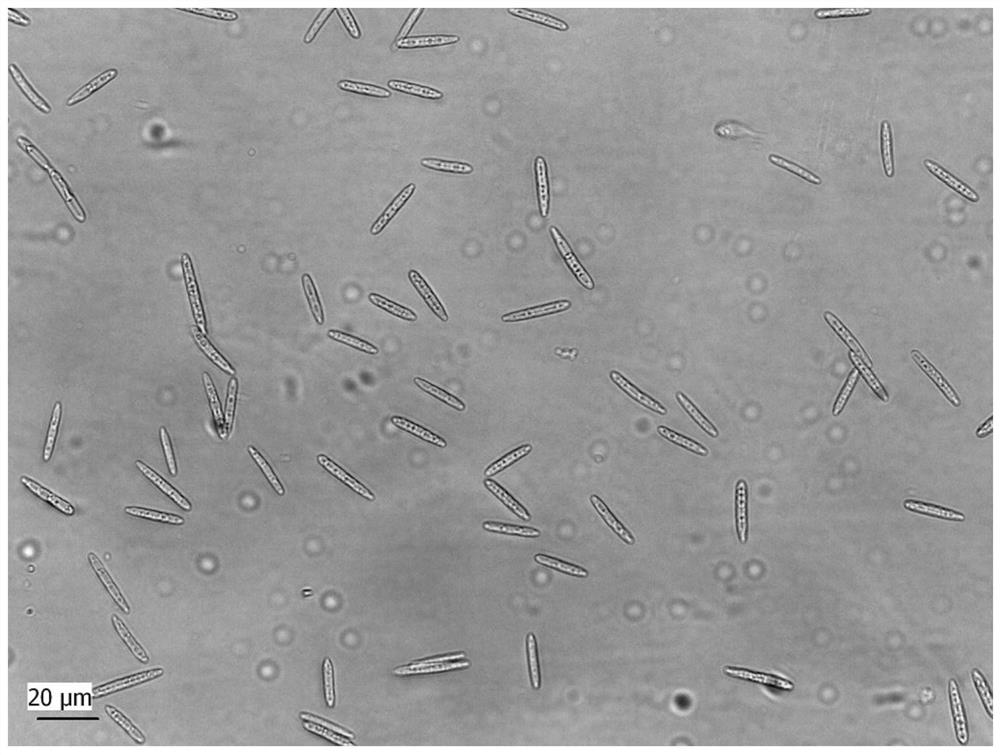Culture method of high-infectivity cordyceps sinensis strain and application thereof
A technology of Cordyceps sinensis and strains, applied in the field of microorganisms, can solve the problems of low isolation success rate, high mortality rate of inoculated larvae, and large damage to insect bodies, etc., and achieve strong infectivity, improved infection rate, and good production traits.
- Summary
- Abstract
- Description
- Claims
- Application Information
AI Technical Summary
Problems solved by technology
Method used
Image
Examples
Embodiment 1
[0061] Isolation and cultivation of the wild Cordyceps sinensis bacterial strain of embodiment 1
[0062] Excavated 100 strains of Cordyceps sinensis complete fungus complex with thick and plump fruiting bodies and large worms from the hillside at an altitude of 4300-4800 meters in Kangding, Sichuan. room. After manually peeling off a layer of wet soil covering the surface of the insect body, rinse the surface of the insect body with running water and use a special brush with a special environmental protection brush (brush head made of PVC, length 1cm, brush handle length 12cm) to remove the bacterial film on the surface of the insect body, etc. Impurities have no direct damage to the insect body and are cleaned more cleanly. Pre-disinfect the body surface with 75% alcohol, then disinfect with 0.1% mercuric chloride solution for 2 minutes, and then rinse with sterile purified water in an ultra-clean bench. Cut open the inner sclerotium of the worm body with a bacterial scalpe...
Embodiment 2
[0063] Example 2: Morphological identification of Cordyceps sinensis DYG-053B
[0064] The growth and single colony morphology of the wild-type bacterium DYG-053B on the solid medium were observed, and the solid medium refers to the PDA medium. In addition, the scanning electron microscope was used to observe the microorganisms in the zombie worms to understand the morphology of the microorganisms. After identification, the initial mycelium is white and dense, easy to pick, the colony is raised and wrinkled, and the colony produces a small amount of melanin into the medium. With the extension of the culture time, the back of the mycelium gradually turns black, and the surface is no longer Round, snow-white hyphae fluffy outward, such as figure 1 shown. Under the microscope, the conidia of the fungus were observed to be typical kidney-shaped, such as figure 2 As shown, the mycelium has a septum and branches, with a diameter of 2.0-4.5 μm, and a small bottle-shaped stalk is ...
Embodiment 3
[0065] Embodiment 3: Indoor infectivity determination of Cordyceps sinensis DYG-053B to bat moth larvae
[0066] The infection ability of the strain is directly related to the infection of the strain and the stiffening effect of the infected larvae, and is an extremely important indicator for measuring the excellent properties of the strain of Cordyceps sinensis.
[0067] Insects for testing: Collect overwintering surviving bat moth pupae on a hillside at an altitude of 4300-4800 meters in Kangding, Sichuan Province in early June, and then hatch indoors to mate, lay eggs, and hatch to 3-5 instars, and conduct an indoor infection test of Cordyceps sinensis strains; selection Similar in size, healthy and active live worms were used as test worms.
[0068] The Cordyceps sinensis bacterial strain DYG-053B obtained in Example 1 was inoculated onto a solid medium, and the solid medium refers to a PDA medium. Under the conditions of 18°C and relative humidity of 95%, after nearly ...
PUM
 Login to View More
Login to View More Abstract
Description
Claims
Application Information
 Login to View More
Login to View More - R&D
- Intellectual Property
- Life Sciences
- Materials
- Tech Scout
- Unparalleled Data Quality
- Higher Quality Content
- 60% Fewer Hallucinations
Browse by: Latest US Patents, China's latest patents, Technical Efficacy Thesaurus, Application Domain, Technology Topic, Popular Technical Reports.
© 2025 PatSnap. All rights reserved.Legal|Privacy policy|Modern Slavery Act Transparency Statement|Sitemap|About US| Contact US: help@patsnap.com



